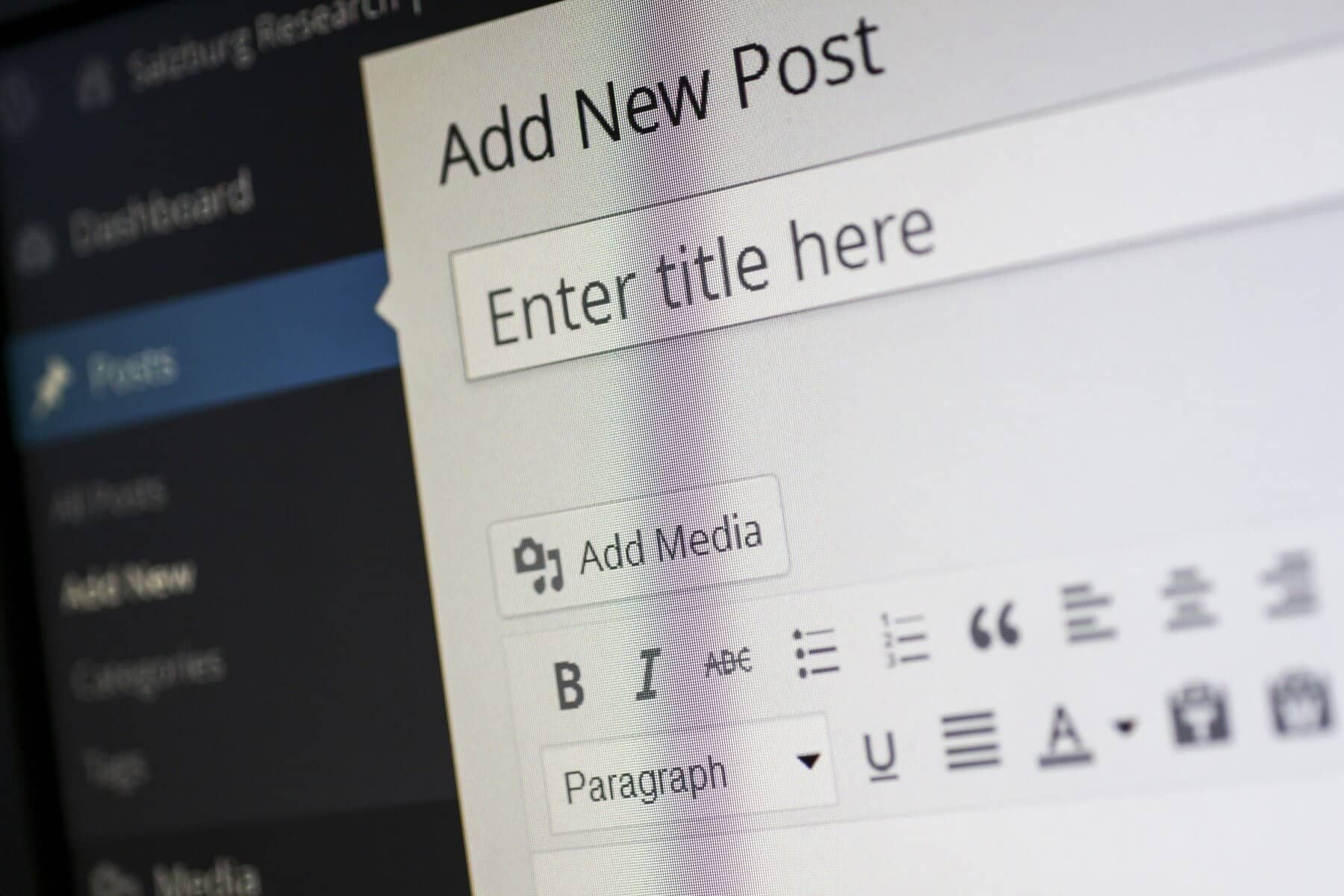
WordPress is an incredibly versatile and powerful platform, with its ease of use and extensive functionality making it the go-to choice for millions of websites worldwide. However, simply setting up your WordPress site isn’t enough; keeping it running smoothly requires ongoing maintenance and care. A well-maintained website ensures a positive user experience, reduces downtime, and protects against security threats. In this comprehensive guide, we’ll delve into the essential practices that will help you maintain a fast, secure, and efficient WordPress site. By following these best practices, you can keep your website in top shape and avoid common pitfalls that could hinder its performance.
Regularly Update WordPress, Themes, and Plugins
One of the most fundamental aspects of keeping your WordPress site running smoothly is ensuring that your WordPress core, themes, and plugins are always up to date. WordPress, along with its associated themes and plugins, frequently releases updates that bring new features, improve performance, and patch security vulnerabilities. Ignoring these updates can leave your site vulnerable to attacks, cause compatibility issues, and lead to potential malfunctions.
Why it matters: Updating your WordPress installation, themes, and plugins is crucial for maintaining the security and functionality of your site. Outdated software is one of the most common reasons websites get hacked, as cybercriminals exploit known vulnerabilities in old versions. Additionally, updates often come with performance enhancements and bug fixes that can improve your site’s speed and reliability. By staying on top of updates, you ensure that your website remains secure, efficient, and fully functional, providing your visitors with a seamless experience.
Action Steps:
- Enable automatic updates for the WordPress core to ensure that you always have the latest version without needing to manually update it.
- Regularly check for updates to your themes and plugins through your WordPress dashboard, and apply them as soon as they become available.
- Before applying updates, especially for major ones, it’s a good idea to back up your site. This ensures that you can quickly restore your site to its previous state if something goes wrong during the update process.
- After updating, thoroughly test your site to ensure that everything is functioning correctly. This includes checking your site’s front end, as well as any critical backend processes.
Optimize Your Database
The WordPress database is the backbone of your website, storing everything from posts and pages to comments and settings. Over time, as you add more content and make changes to your site, your database can become cluttered with unnecessary data such as post revisions, spam comments, and transient options. This bloat can slow down your site, affecting both front-end performance and back-end management.
Why it matters: An optimized database is crucial for maintaining the speed and efficiency of your WordPress site. A cluttered database can lead to slower page load times, increased server load, and a generally sluggish user experience. By regularly cleaning and optimizing your database, you remove unnecessary data, streamline your site’s operations, and improve overall performance. This not only enhances the user experience but also positively impacts your site’s SEO, as faster-loading sites are more likely to rank higher in search engine results.
Action Steps:
- Utilize a plugin like WP-Optimize or WP-Sweep to clean up and optimize your database. These plugins allow you to easily remove unnecessary data, such as post revisions, spam comments, and unused tags.
- Schedule regular database optimization tasks to keep your database lean and efficient. Depending on the size and activity level of your site, you might want to perform these tasks weekly or monthly.
- Consider limiting the number of post revisions stored in your database by adding a line of code to your wp-config.php file. For example, you can limit revisions to 5 per post to prevent your database from becoming bloated with unnecessary revisions.
- Periodically review your database for tables left behind by uninstalled plugins. These orphaned tables can take up space and slow down your site. If you’re comfortable with database management, you can manually remove these tables.
Monitor and Improve Site Speed
Website speed is a critical factor that can make or break your site’s success. Visitors expect websites to load quickly, and if your site takes too long to load, they are likely to leave and never return. Moreover, search engines like Google consider site speed as a ranking factor, meaning that a slow site can hurt your SEO efforts. Therefore, monitoring and improving your site’s speed should be a top priority.
Why it matters: A fast-loading website enhances user experience, reduces bounce rates, and boosts conversion rates. Studies have shown that even a one-second delay in page load time can result in a significant drop in conversions. Additionally, site speed is directly linked to your site’s search engine rankings. Faster sites are favored by search engines, leading to better visibility and more traffic. By focusing on site speed, you not only provide a better experience for your users but also improve your chances of achieving your online goals.
Action Steps:
- Use tools like Google PageSpeed Insights, GTmetrix, or Pingdom to analyze your site’s speed and identify areas for improvement. These tools provide detailed reports on your site’s performance, including recommendations for optimizing load times.
- Optimize images by compressing them without sacrificing quality. Large image files can significantly slow down your site, so it’s essential to reduce their size using tools like Smush, TinyPNG, or ImageOptim.
- Implement caching to reduce load times and server load. Caching plugins like W3 Total Cache, WP Super Cache, or LiteSpeed Cache create static versions of your pages, which load faster than dynamic content generated on the fly.
- Consider using a content delivery network (CDN) to speed up the delivery of your site’s content to users around the world. A CDN caches your site’s static files (such as images, CSS, and JavaScript) on servers across multiple locations, reducing latency and improving load times for users in different geographical locations.

Implement Strong Security Measures
Security is one of the most important aspects of maintaining a WordPress site. With WordPress being the most widely used content management system, it’s also a prime target for hackers and malicious actors. Implementing robust security measures is essential to protect your site from attacks, data breaches, and other security threats that could compromise your site’s integrity and your visitors’ information.
Why it matters: A security breach can have devastating consequences, including loss of data, downtime, and damage to your site’s reputation. In some cases, a hacked site can be blacklisted by search engines, leading to a significant drop in traffic and potential revenue loss. Moreover, if your site handles sensitive information, such as customer data or payment details, it’s your responsibility to ensure that this data is protected from unauthorized access. By prioritizing security, you safeguard your site, your visitors, and your business from the potentially catastrophic effects of a cyberattack.
Action Steps:
- Install a reputable security plugin like Wordfence, Sucuri, or iThemes Security. These plugins provide comprehensive protection by monitoring your site for suspicious activity, blocking malicious traffic, and offering firewall protection.
- Enable two-factor authentication (2FA) for all user accounts, especially those with administrative privileges. 2FA adds an extra layer of security by requiring a second form of verification (such as a text message code) in addition to the standard username and password.
- Regularly change and update your passwords, using strong, unique passwords for all accounts associated with your WordPress site. Avoid using the same password across multiple sites or services.
- Set up regular backups of your entire site, including the database and files. Use plugins like UpdraftPlus, BackupBuddy, or VaultPress to automate backups and store them in a secure location, such as cloud storage or an external server.
Manage Plugins Wisely
Plugins are one of the features that make WordPress so powerful, allowing you to extend your site’s functionality with just a few clicks. However, it’s essential to manage your plugins wisely, as having too many or using poorly coded plugins can lead to a range of issues, including slow load times, security vulnerabilities, and site crashes.
Why it matters: While plugins can add valuable features to your site, they also come with risks. Each plugin you install introduces additional code that needs to be loaded every time someone visits your site. This can slow down your site, especially if you have a large number of plugins or if the plugins are not optimized for performance. Additionally, outdated or poorly coded plugins can create security holes that hackers can exploit. By carefully selecting and managing your plugins, you can maintain a fast, secure, and reliable site.
Action Steps:
- Conduct a regular audit of your installed plugins to identify those that are no longer needed or actively used. Deactivate and delete any plugins that you don’t use to reduce your site’s overhead and minimize potential security risks.
- When choosing plugins, prioritize quality over quantity. Look for plugins that are regularly updated, well-supported by their developers, and have positive reviews from other users. Avoid plugins that have not been updated in a long time, as they may be incompatible with the latest version of WordPress.
- Consider using multifunctional plugins that can replace several single-purpose plugins. For example, a plugin like Jetpack offers a wide range of features, including security, performance optimization, and social media integration, reducing the need for multiple separate plugins.
- Be cautious about installing plugins from unverified sources. Always download plugins from the official WordPress repository or trusted developers to reduce the risk of installing malicious or poorly coded plugins.
Regularly Monitor Site Health
Monitoring your WordPress site’s health is an ongoing process that involves keeping an eye on various aspects of your site’s performance, security, and overall functionality. WordPress offers built-in tools that allow you to assess your site’s health and identify potential issues before they escalate into serious problems.
Why it matters: Regularly monitoring your site’s health helps you catch and address issues early on, preventing them from affecting your site’s performance or security. Proactive site management allows you to maintain a smooth-running website that provides a positive experience for your visitors. Additionally, staying on top of site health ensures that your site remains compliant with best practices and avoids potential penalties from search engines or other platforms.
Action Steps:
- Use the WordPress Site Health tool, located under Tools > Site Health in your dashboard, to regularly check your site’s status. This tool provides a comprehensive overview of your site’s performance and security, highlighting any critical issues that need to be addressed.
- Pay attention to the recommendations provided by the Site Health tool, and take action to resolve any issues or warnings. This might involve updating plugins, optimizing your database, or adjusting your server settings.
- Review your site’s error logs regularly to identify and troubleshoot any recurring issues. Error logs can provide valuable insights into problems that may not be immediately visible on the front end but could impact your site’s performance or stability.
- Consider using additional monitoring tools, such as Google Analytics and Search Console, to track your site’s traffic, performance, and search engine visibility. These tools can help you identify trends, spot potential issues, and make data-driven decisions to improve your site’s health.
Keep Your Content Organized
Organizing your content effectively is crucial for both user experience and search engine optimization (SEO). A well-structured site makes it easy for visitors to find the information they’re looking for, while also helping search engines understand and index your content. By keeping your content organized, you can enhance navigation, improve site usability, and boost your site’s SEO performance.
Why it matters: A cluttered, disorganized site can confuse visitors, leading to higher bounce rates and lower engagement. In contrast, a well-organized site encourages visitors to explore more pages, stay longer, and return in the future. Additionally, search engines like Google prioritize well-structured sites in their rankings, making it easier for your content to reach a wider audience. By organizing your content effectively, you not only improve the user experience but also increase your chances of ranking higher in search engine results.
Action Steps:
- Use categories and tags strategically to organize your content. Categories should represent the broad topics covered on your site, while tags can be used to describe specific details or themes within each post. Avoid overusing tags, as this can lead to redundancy and confusion.
- Ensure that your site’s navigation menu is clear, intuitive, and easy to use. Group related content under appropriate menu items, and consider using drop-down menus to organize subcategories or specific sections of your site.
- Regularly review and update your content to ensure it remains relevant and accurate. This includes updating old posts with new information, fixing broken links, and optimizing content for current SEO best practices.
- Create a logical URL structure that reflects the organization of your content. Use descriptive, keyword-rich URLs that provide both users and search engines with a clear understanding of what each page is about.
Ensure Mobile Responsiveness
With an increasing number of users accessing the web via mobile devices, ensuring that your WordPress site is fully responsive is more important than ever. A responsive site adapts to different screen sizes and resolutions, providing an optimal viewing experience on desktops, tablets, and smartphones. Failing to optimize your site for mobile users can result in a poor user experience, higher bounce rates, and lower search engine rankings.
Why it matters: Mobile responsiveness is a critical factor in today’s digital landscape, where more than half of all web traffic comes from mobile devices. A mobile-friendly site ensures that your content is easily accessible and readable on any device, reducing the likelihood of visitors leaving your site due to poor usability. Moreover, Google’s mobile-first indexing means that the mobile version of your site is prioritized in search engine rankings, making it essential to optimize your site for mobile users. By focusing on mobile responsiveness, you can reach a wider audience, improve user engagement, and boost your site’s visibility in search engine results.
Action Steps:
- Choose a responsive WordPress theme that automatically adjusts to different screen sizes. Most modern themes are designed with mobile responsiveness in mind, but it’s important to test your theme on various devices to ensure it provides a seamless experience.
- Use Google’s Mobile-Friendly Test tool to check how well your site performs on mobile devices. This tool provides a detailed report on any issues that may be affecting your site’s mobile usability, along with recommendations for improvement.
- Optimize your site’s layout and design for mobile users. This includes using large, legible fonts, ensuring buttons and links are easy to tap, and avoiding elements that require horizontal scrolling or pinch-zooming.
- Consider implementing AMP (Accelerated Mobile Pages) to improve the loading speed of your mobile pages. AMP is a framework designed to create fast-loading, mobile-optimized content, which can improve user experience and increase your chances of ranking higher in mobile search results.
